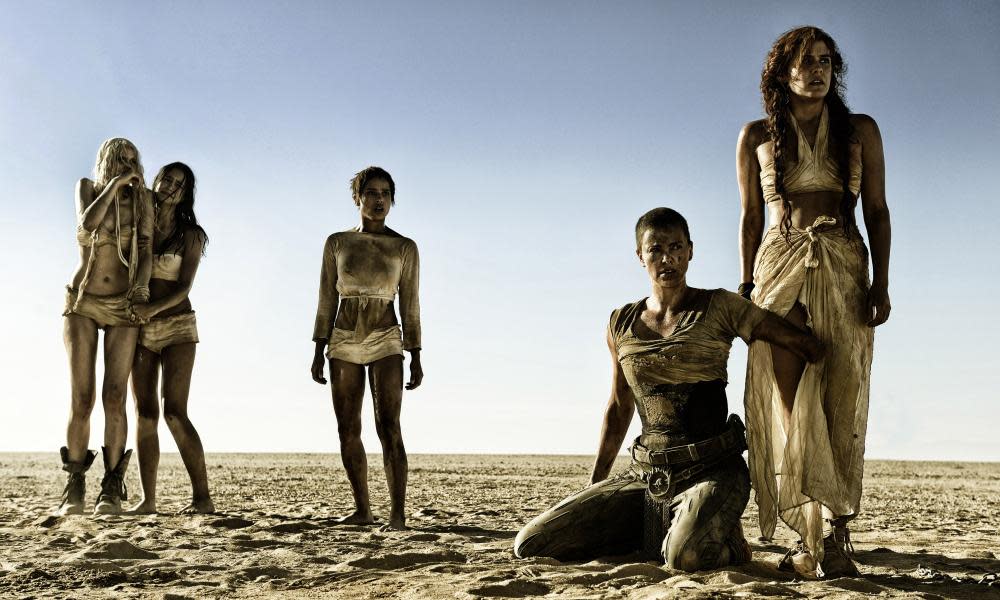The Mad Max films depict a world increasingly degraded. Furiosa will be far from comforting

We don’t know much about the next Mad Max movie, Furiosa, yet beyond what can be gleaned from chest-beating PR announcements – such as claims it will be the biggest movie ever made in New South Wales and perhaps the biggest of all time in Australia. (Feeling jealous, Baz Luhrmann?!)
We do know that Anya Taylor-Joy – fresh from the success of The Queen’s Gambit – will play the lead role and Chris Hemsworth will co-star, marking Hemsworth’s first Australian film. All it took to get him on board was a blockbuster of potentially unprecedented proportions.
We can assume that Furiosa, when completed, will unfold at face-melting speed, and that the story will detail the protagonist’s life well before she fled the Citadel with Immortan Joe’s wives in the Oscar-winning Mad Max: Fury Road. And we absolutely know that it will grapple with one of the key themes of the Mad Max franchise, which is also one of the most prominent and perhaps most important themes in the history of Australian film: coming to terms with the land.
Related: How can Furiosa expand on Max Max: Fury Road's brutal feminist polemic?
This is the cinema of Wake in Fright, Picnic at Hanging Rock, Priscilla: Queen of the Desert, The Overlanders, Jedda, Welcome to Woop Woop, Walkabout, Sweet Country, The Nightingale and so many more of our best and boldest films, each ruminating on the environment and the natural world in their own ways. Although Fury Road was actually shot in Namibia (not the director’s first choice of location), it’s very much part of this movement – taking place in the narrative world on the same sun-scorched plains as the previous three Mad Max movies.
The series so far follows a linear timeline, depicting a world increasingly degraded and destroyed culturally, politically and environmentally. This timeline can be observed aesthetically as well as in narrative terms. In the original film, most elements of society still function (the police, capitalism, etc) and the colour of the tableau reflects this, dominated by earthy brown (shrubs and parched land), greys (lots of shots of roads) and washed-out blue (the sky). By Fury Road the colours have become frazzled, cooked, burnt to a crisp, smothered in orange. Furiosa will jump back in time and break the linear narrative by exploring the character’s past, but it won’t offer a comforting vision of the future of humankind, that’s for sure.
Miller has described Mad Max as taking place 'next Wednesday – when all the bad things we read in the news come to pass'
Conceived in the 1970s, when global heating wasn’t big in the public consciousness, the environmental degradation in Mad Max (in part a result of fallout from a nuclear war that occurred between the end of the first film and the start of the second) is not explicitly related to the climate crisis. But Mad Max was conceived with political realities and collective fears of the time in mind and is malleable in terms of its political messages; a canvas upon which we can project various postulations. It was inspired in part by the 1973 “oil shock”, which saw the price of petrol skyrocket, making it eerily plausible that one day highway gangs might – to quote the narrator of The Road Warrior – “wage war for a tank of juice”.
Today, the most obvious and logical lens with which to view the environmental devastation in Mad Max is the climate crisis. Miller has described the future world of Mad Max as taking place “next Wednesday – when all the bad things we read in the news come to pass”. With rising sea levels, increasing global heating and the myriad of consequences that come with this, science irrefutably tells us that very bad things have already come to pass in the real world, with a lot more where that came from.
The Mad Max movies have never been more important, because the gap is shortening between the imaginative world and the real one. We may be a while away from a despot fitted with a respirator, horrible rows of horse teeth and armour made of bulletproof plexiglass, and who deprives starving citizens. But we are beginning to get a picture of what new kinds of eco-fascism and eco-authoritarianism might look like, including its genocidal implications. And we are starting to have conversations about many other very Mad Max-ian things, such as the prospect of our children one day waging wars over food and water.
Related: Sandy Harbutt on the film that paved the way for Mad Max: ‘I’ve been knocked back ever since’
As for that great theme in Australian cinema, about – as our national anthem describes it – a land of “golden soil” and “beauty rich and rare”, the climate crisis has changed the way we must think about and interpret it. This crucial theme can no longer be considered as merely about coming to terms with our land, but our treatment of it: what we have done and continue to do to the natural world.
These are essential questions to ask, in a country led by a government hooked on fossil fuels – a dependency that will ultimately take us to a world where our darkest fears are realised. If Mad Max began next Wednesday, what day are we in now? Sunday? Monday? Tuesday?
For Furiosa, the film-makers will jump back in the timeline and break the linear narrative. We will not be able to do that in our real-life treatment of the climate crisis. The Mad Max series began with a B-movie about lead-footed yahoos causing carnage on the road. It now embodies a powerful political message that seems to say: “don’t let the real world get like this one”. Let us interpret it as a clarion call to fight for a better future.

 Yahoo News
Yahoo News 
